Adventurers in the Appalachia
My First trip on the Southwest Chief going to
the 2018 NRHS Convention in Cumberland, Maryland
Chapter Twenty-one
Western Maryland Trip to Frostburg,
MD
August 9, 2018
Thursday
by
Robin Bowers
Text and Photos by Author
The
author retains all rights. No reproductions are allowed
without the author's consent.
Comments are appreciated at...yr.mmxx@gmail.com
I had another
good breakfast in the hotel dining room among fellow
conventioneers. Chris got up earlier because he wanted to return
the car rental now. After eating I went upstairs to do my
laundry. The hotel was a laundromat, but only one of each
machine. Chris did his last night but I didn't want to stay up
most of the night and we had the morning free so I planed to do
it after breakfast. This should be the last for this trip and we
been lucky to find laundromats every five or six days that were
convenient.
At 10:15am Bob, Elizabeth, Chris and myself
met to walk the five short blocks to the Western Maryland
Maryland station. The NRHS has their trip on the Western
Maryland Scenic Railroad scheduled for Sunday but no trips for
today so we decided to do the trip today and leave one day early
on Saturday night for Chicago.
The Western Maryland Scenic Railroad History
The Western Maryland Scenic Railroad is a heritage railroad
based in Cumberland, Maryland. It operates over ex-Western
Maryland Railway trackage to Frostburg, Maryland and back
using both steam and diesel locomotives.
The WMSR operates passenger excursion trains and occasional
freights when needed out of the former Western Maryland
station in Cumberland, which also houses one of the six
visitor centers of the Chesapeake and Ohio Canal National
Historical Park as well as other attractions and offices. This
station was built in 1913.
The railroad offers coach and first class service, as well as
reserved caboose rides. The railroad also runs murder mystery
excursions and special seasonal trips.
Rail line description
The track, which for the most part follows a former Western
Maryland Railway line, proceeds northwest from Cumberland
through "the Narrows", a deep water gap formed by the passage
of Wills Creek between Haystack Mountain and Wills Mountain,
parts of the Wills Mountain Anticline geological structure.
The train then proceeds up the Allegheny Front through a water
gap formed by Jennings Run, passes Mt. Savage, and terminates
at the former Cumberland and Pennsylvania Railroad depot in
Frostburg. The train lays over there for about 90 minutes to
allow passengers to visit the town, and the locomotive is
turned back there on a turntable that originally served the
Western Maryland in Elkins, West Virginia. The train then
returns to Cumberland by the same route.
Intermediate sights on the line include: Helmstetter's Curve
in Cash Valley, Brush Tunnel and Woodcock Hollow, site of a
hairpin curve.
The Allegheny Highlands Trail of Maryland, part of the Great
Allegheny Passage bicycle trail from Cumberland to Pittsburgh,
Pennsylvania, runs along the route of the Western Maryland
Scenic Railroad. Cyclists can make reservations with the
railroad to put their bikes on board for the climb up the
mountain to Frostburg, then cycle back down to Cumberland.
Locomotives
Regular power on the railroad is 734. Normal power for the
train is ex-Lake Superior and Ishpeming Railroad 34, now known
as Western Maryland 734, a 1916 Baldwin-built 2-8-0 steam
locomotive painted in WM "fireball" livery with a different
tender from its original. It was originally built for the
LS&I as 34. The locomotive came to the line from the
Illinois Railway Museum in 1991. After an extensive rebuild,
it entered service in 1992; it has received several
modifications over the years to give it more of a WM
appearance. The 734 was retired indefinitely after the 2015
season as well as some special excursions in February &
April 2016 to undergo the 1,472 service-day Federal Railroad
Administration inspection. In order to maintain its steam
locomotive operations, the railroad obtained ex-Chesapeake
& Ohio 2-6-6-2 1309 from the B&O Railroad Museum in
Baltimore, While 734 is in Pieces. In addition, the WMSR has
two ex-Conrail GP30 diesel locomotives (501 being former PRR,
502 being former Reading). WMSR 501 has been painted up in the
Western Maryland Circus red and white paint scheme. These
engines are used as helper engines for the steam locomotive
and as power for short excursions that are run for special
events. The WMSR also has a 60-ton Plymouth Switcher
locomotive, number 7, which is used to switch cars around. It
was also used to transport 1309 to Ridgeley Yards. 2 Canadian
Pacific 4-6-2's 1286 & 1238 operated during the early
years, along with Alco built Diesels such as an RS3 from the
Boston & Maine, an RSD5 from the Chicago & North
Western, & 2 FPA4s from The Canadian National & VIA
Rail.
On November 17, 2017 after failing to meet their projected
summertime completion date for the C&O 1309 the railroad
announced that the project had been put on hiatus.
Shops
The WMSR operates out of the former WM's Ridgeley, West
Virginia car shops located just across the Potomac River from
Cumberland. The shops include offices, a Federal Railroad
Administration building, and the former paint shop which is
now used to house the steam engine and perform repairs on the
railroad's equipment. The WMSR shops also serve as a business
offering restoration services for locomotives and coaches from
both commercial and private owners. South, past the Ridgely
shops and yard, the WMSR also maintains a wye that is used to
turn the railroad's locomotives and coaches.
Passenger and Freight Equipment
Since its creation, the WMSR has gained an extensive
collection of light weight style passenger coaches, many of
which it either has restored to service in its tuscan and gold
livery, or has used for parts to restore other coaches. Many
of the restored coaches are painted with the names of local
area towns, as well as benefactors of the scenic railroad. The
WMSR also has a collection of freight equipment it has
collected from CSX and other sources that it uses for storage
at the shops, rail line maintenance, and photo freight
excursions. The WMSR currently also has three cabooses. They
are two ex-C&O cabooses and one ex-WM caboose. Other
un-restored equipment includes an ex-Chessie System crane,
ex-Amtrak material handling cars, heavyweight coaches and
pieces for a turntable.
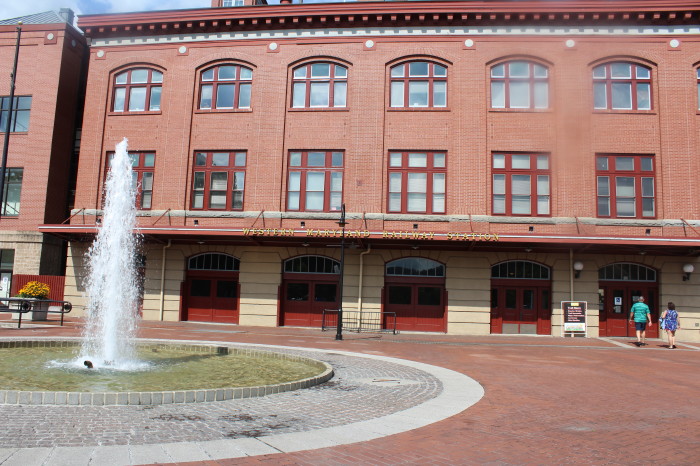
Restored Western Maryland Railway Station, built in 1913.
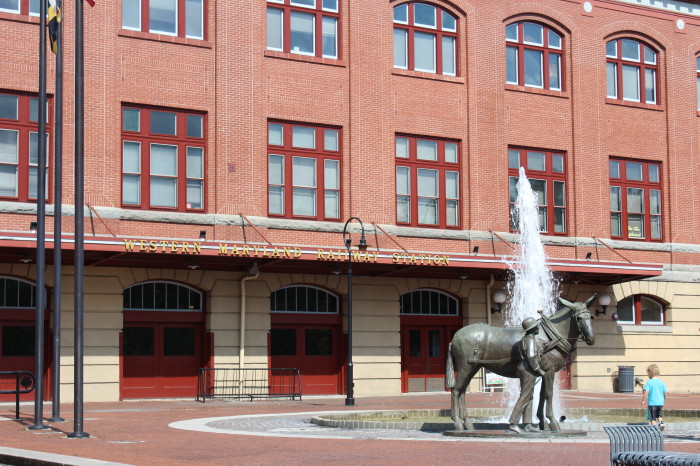
The Allegheny County Tourism
Office and the C&O Canal Visitors Center occupy the ground
floor; the western terminus of the 184.5 mile long Chesapeake
& Ohio Canal (1850-1924) is about 50 yards south. On the
trackside level of the station are the railroad ticket office,
passenger waiting room, a cafe, gift shop and public restrooms.
On the west side of the building are the brick passenger
boarding platforms covered by canopies supported upon cast iron
columns. South of the station, the railroad tracks diverge - the
single track continuing south, parallel to the Potomac River and
the old C&O Canal, connects with CSX mainline and yards in
South Cumberland; the dual tracks that turn southwestward,
crossing the Potomac River to Ridgeley, WV, head to where the
former WM yards and shops are located about half a mile away,
from whence the scenic railroad trains originate.
We then all went inside the
waiting room to the ticket counter where Chris picked up our
complementary tickets but Bob and Elizabeth bought theirs.
Afterwards I checked out the gift shop and bought a small
refrigerator magnet, with space in the luggage running short at
this time. Then I browsed the displays till it was time for the
train to arrive.
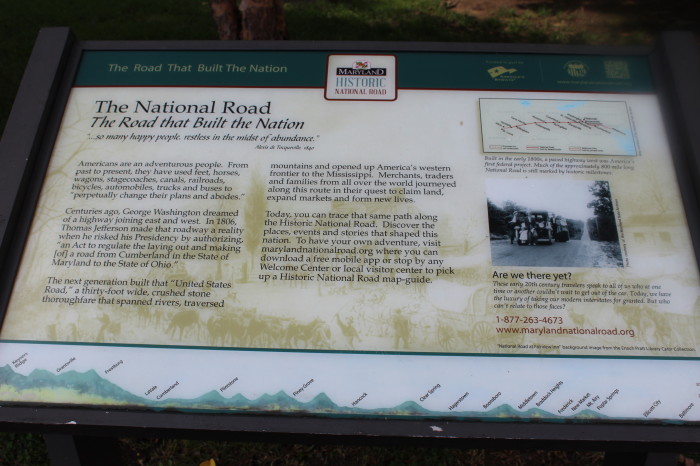
The National Road, US 40, my childhood friend.
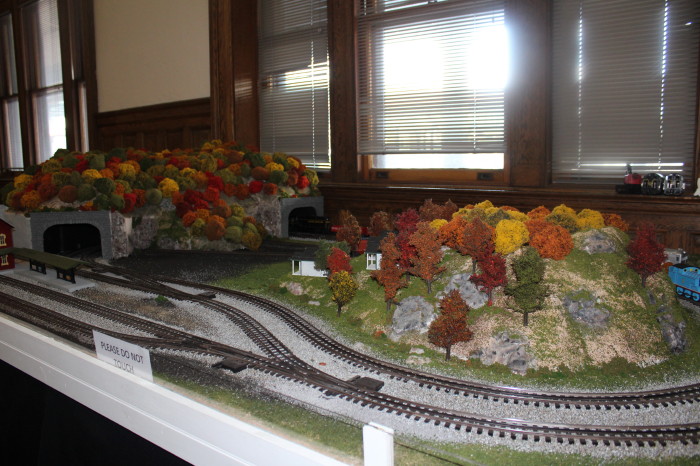
I like the Autumn colors on the trees.
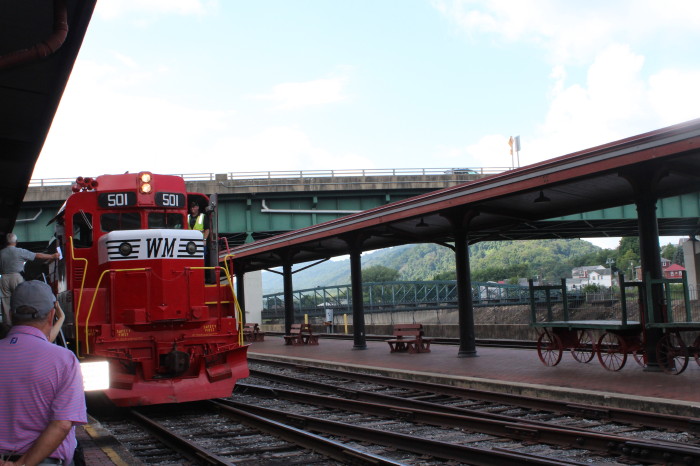
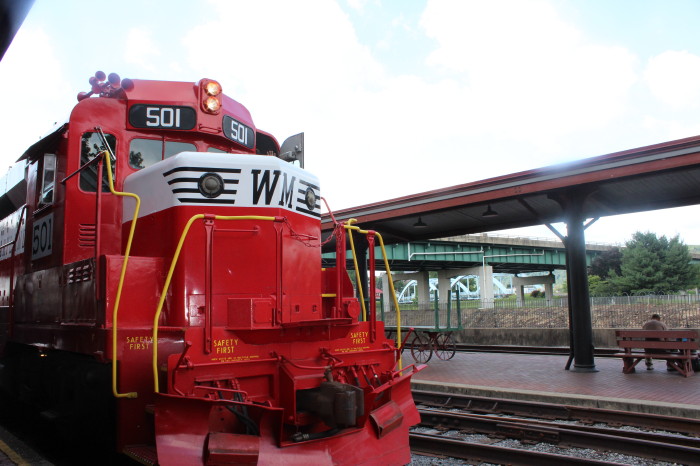
The train pulled into the station and we all waited to board.
Chris remembered that they used the ramp for boarding so he made
his way there and was the first person aboard the train and
saved seats for the four of us.
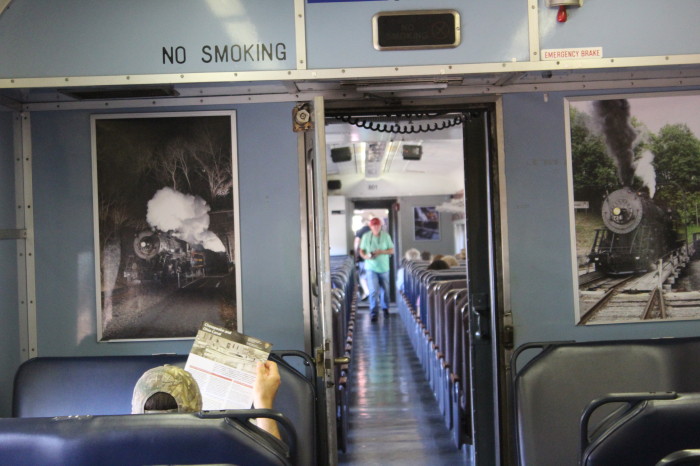
Views inside our car # 112.
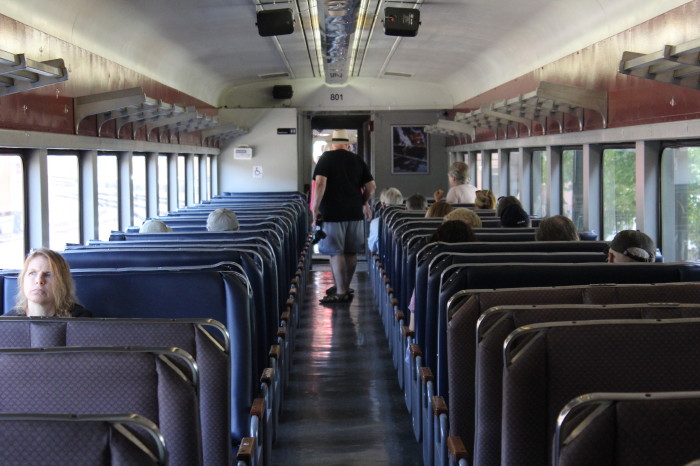
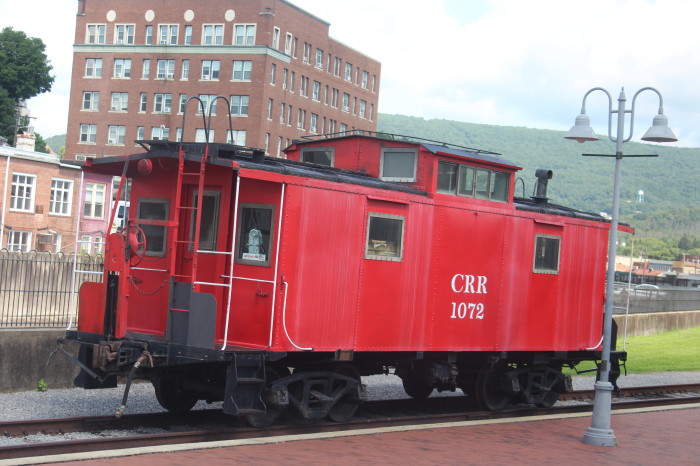
Former Clinchfield caboose 1072 built in 1948 and later
Seaboard 11072, is on display here.
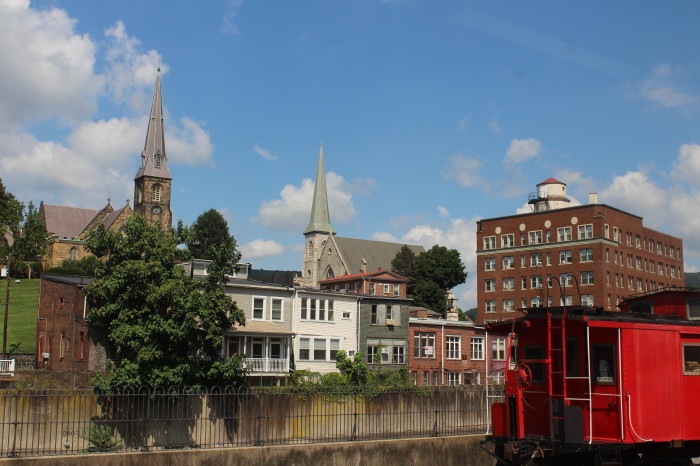
Steeples of the Center Street Methodist Church and St. Patrick
Roman Catholic Church.
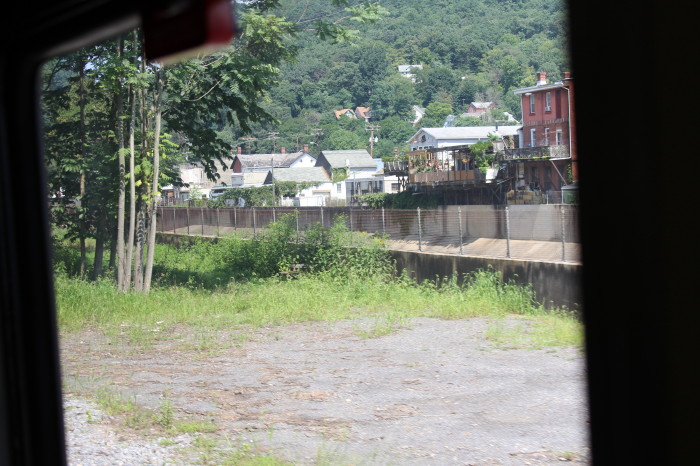
Now we were on our way to Frostburg.
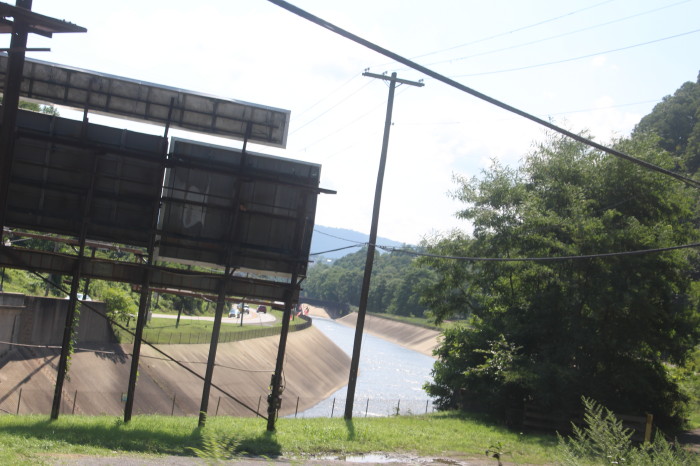
Willis Creek.
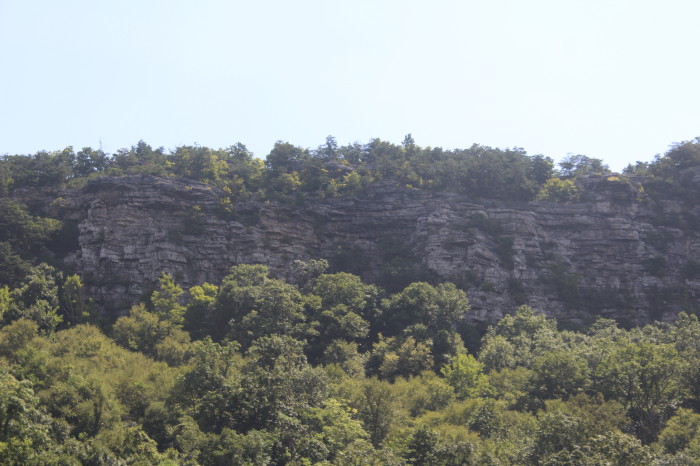
The Narrows began forming
about 150 million years ago when the ancient ridge split apart.
Wills Creek winds through this gap separating Wills Mountain on
the north from Haystack Mountain on the south. The resulting
gorge is a mile long, 900 feet deep and about half a mile wide
between the rims of the two mountains.
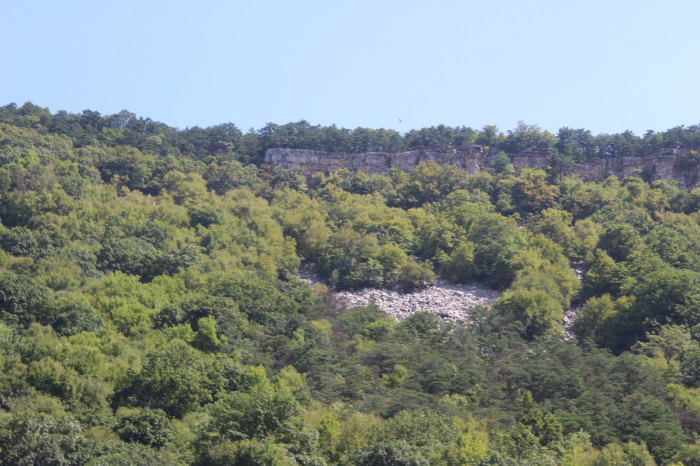
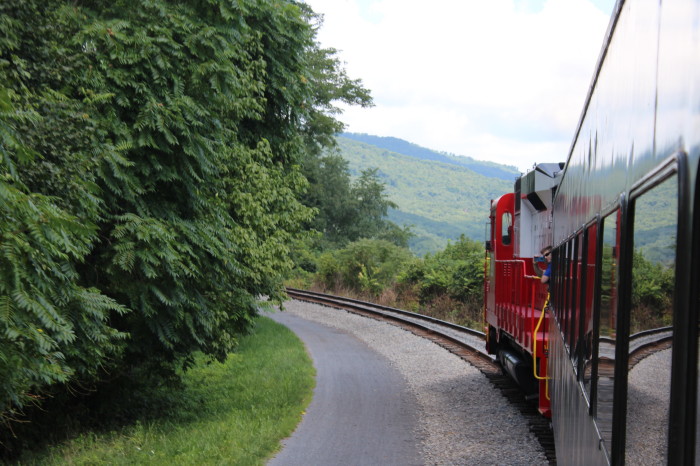
Bike trail abutting the tracks.
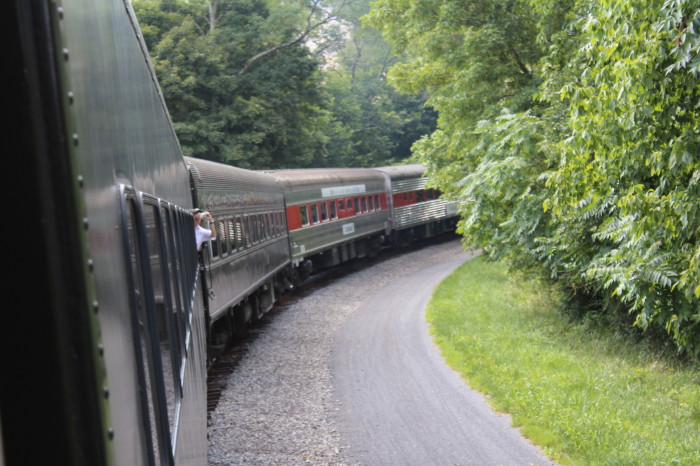
Passengers were allowed to take photos from the vestibule on this
train.
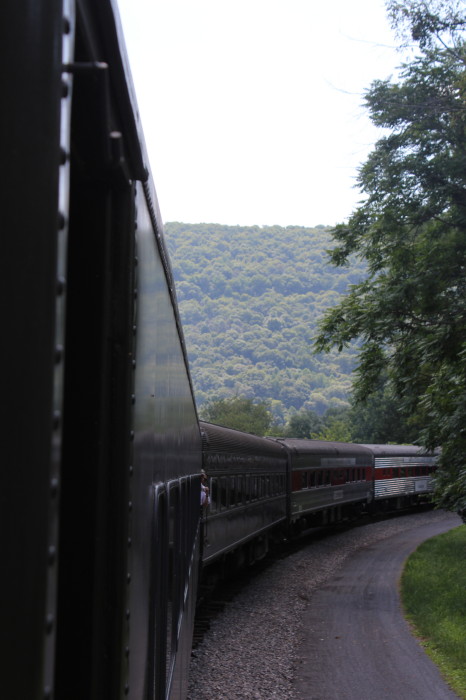
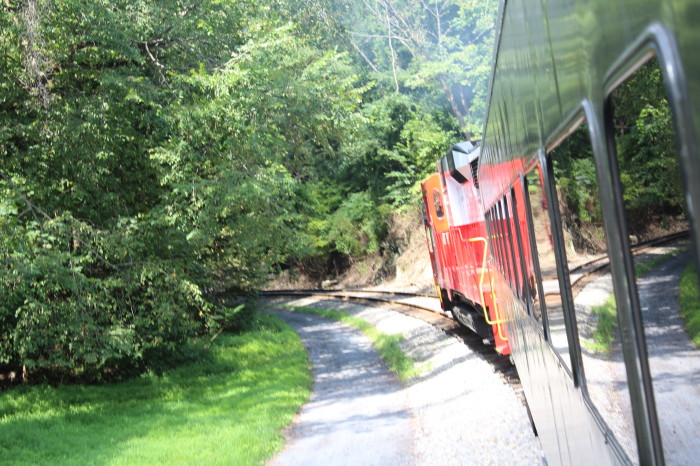
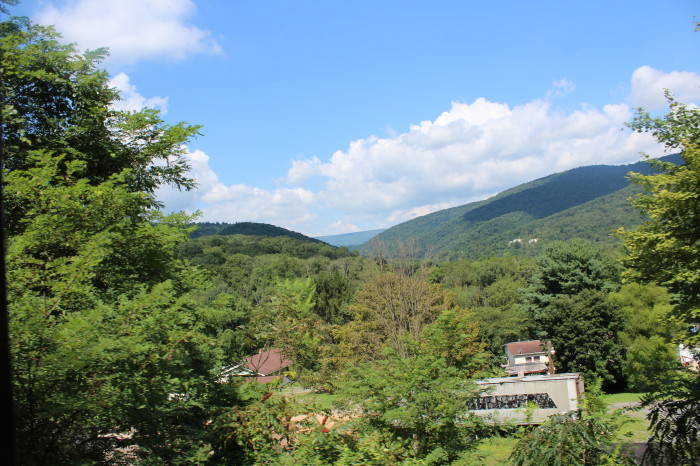
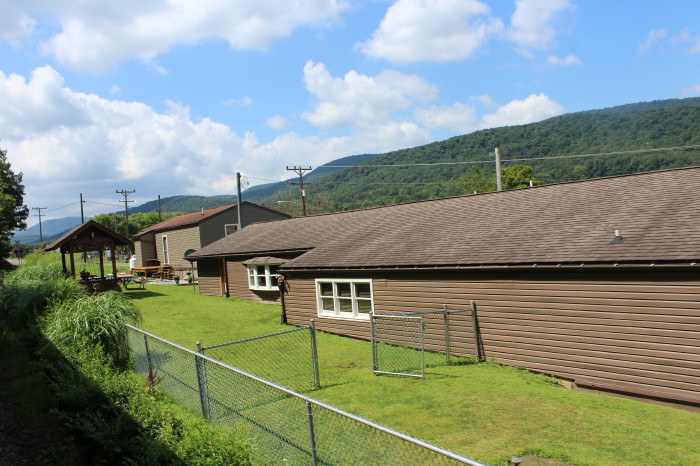
Near Cash Valley Road.
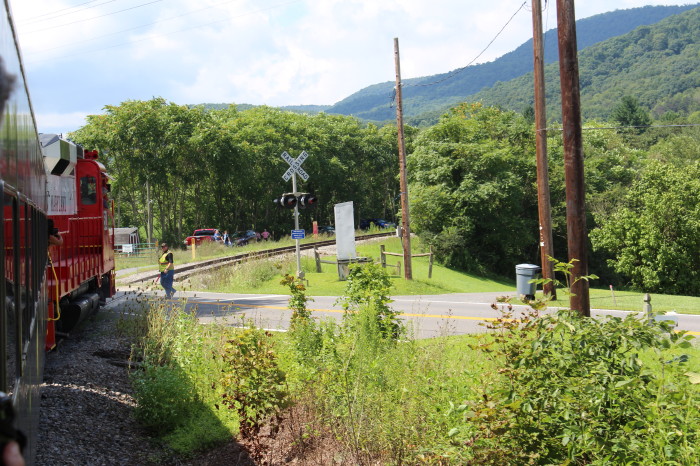
Cash Valley Road.
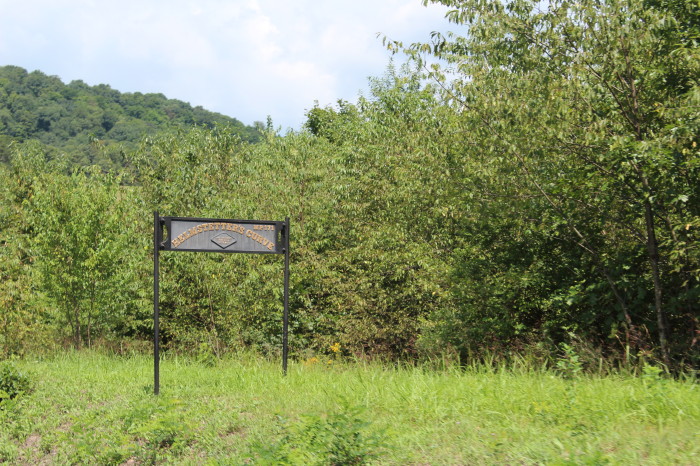
Helmstetter's Curve arcs in a spectacular horseshoe bend a half
mile long and dramatic view of Cash Valley. This curve is named
after the family who operate the farm which the tracks nearly
encircle
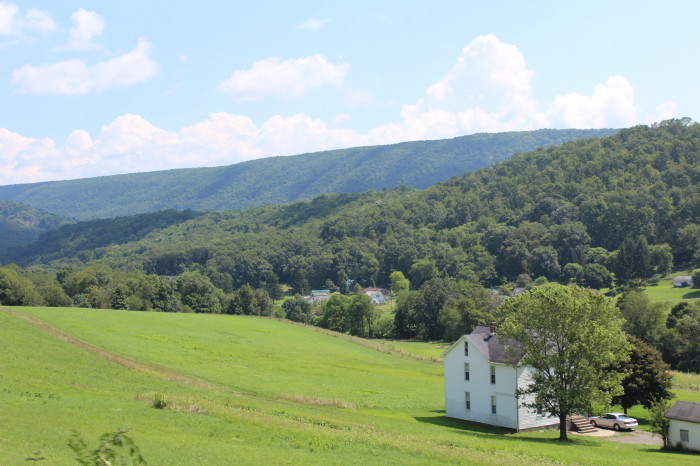
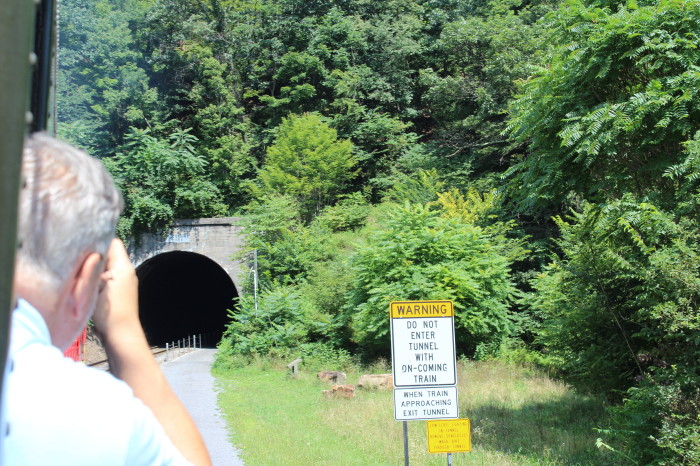
Brush Tunnel, 914 feet long, bores through a promontory of Piney
Mountain. Built in 1911, the tunnel was wide enough to accommodate
the original double tracks of the Western Maryland main line.
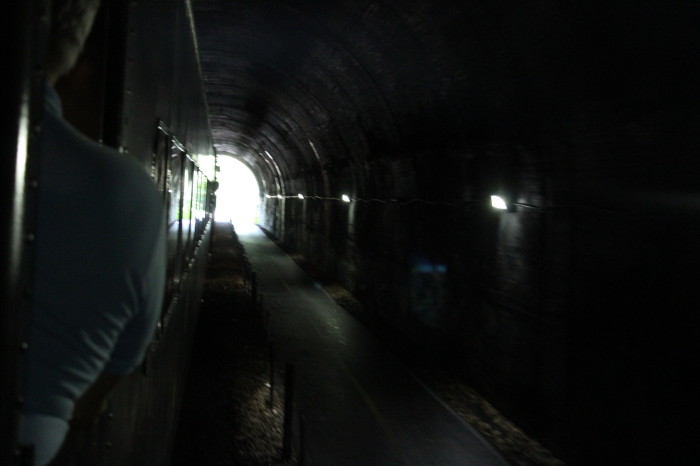
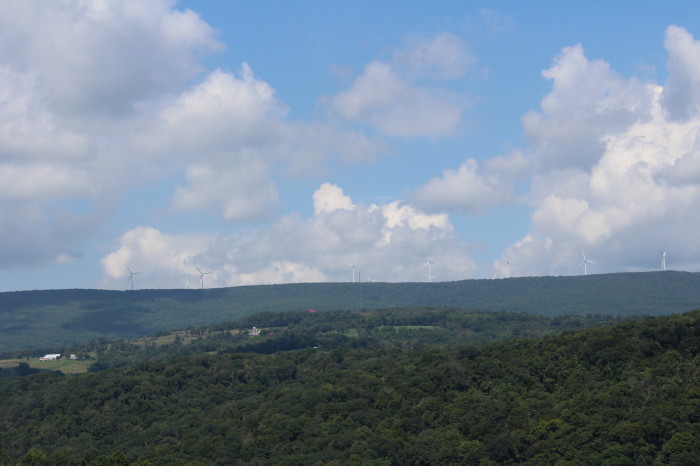
The old Western Maryland
Railway skirts along the northern end of Piney Mountain, two to
three hundred feet above the Jennings Run Valley. In the
springtime, dogwood and redbud blossom in the forest covering
Little Allegheny Mountain across the valley to the north. Below
the valley, the Old C&P rails between Cumberland and Mount
Savage ran parallel to MD Route 36. Hemlock, white pine,
mountain laurel and rhododendron can be seen growing amid the
large boulders on upper slope.
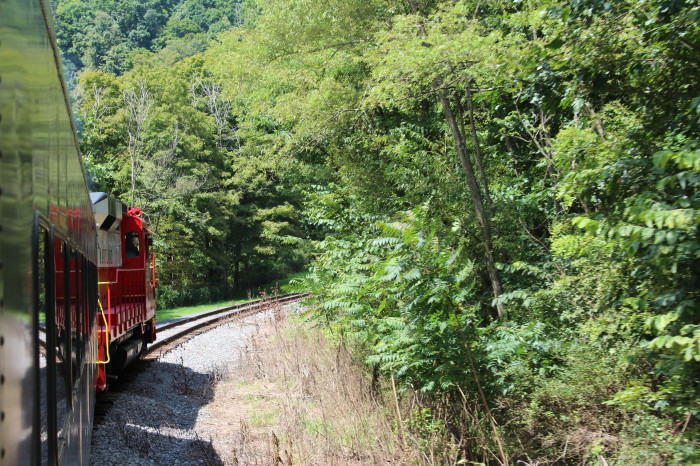
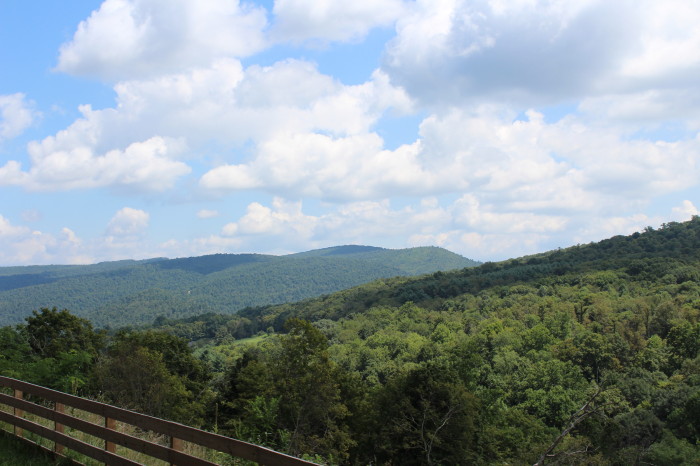
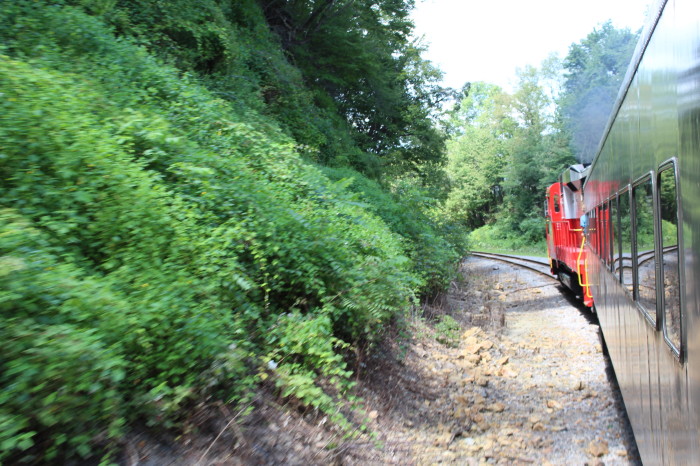
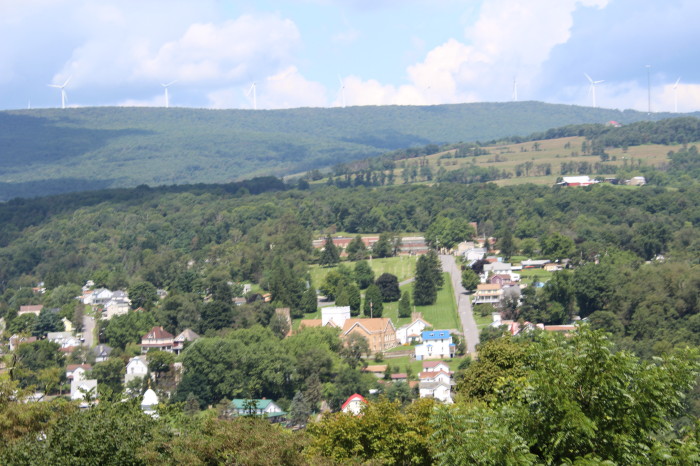
A good view overlooking Mount
Savage where the first rolled iron rails in the United States
were manufactured in 1844. These rails weighed 42 pounds to the
yard (the standard rail of today weighs 130 -140 pounds per
yard) and were used to construct a 9 mile long railroad down the
Jennings Run Valley to Cumberland. From the mid-1840s until the
1940s, The C&P Railroad had its yards, offices and shops
here and built or rebuilt about one hundred steam locomotives
for its company and other short line companies.
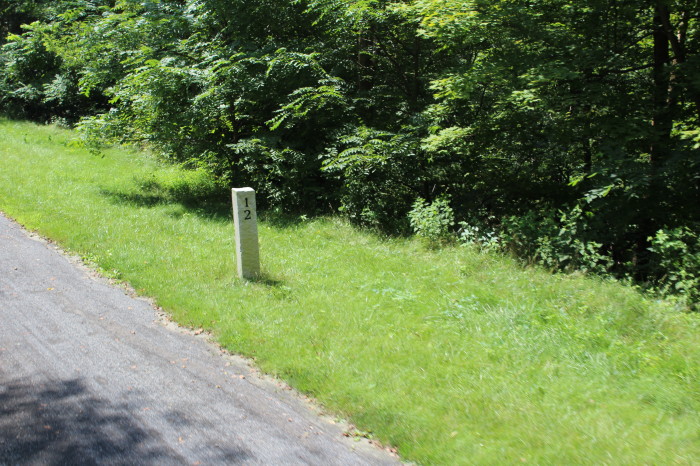
Mile marker for the bike trail.
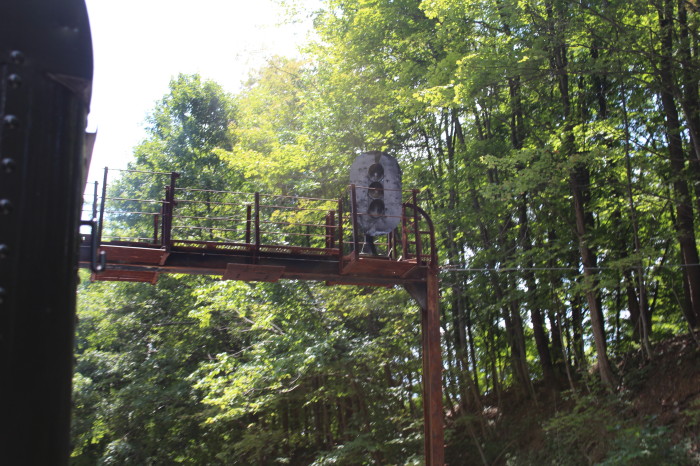
Trimble Road where there was an overhead signal bridge just before
the road crossing and a two mile long passing siding to a
coal-loading landing on the south side.
Frostburg
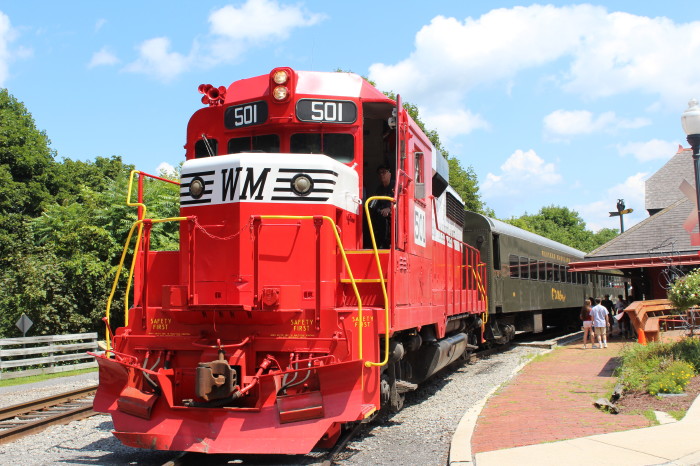
Western Maryland GP30 501.
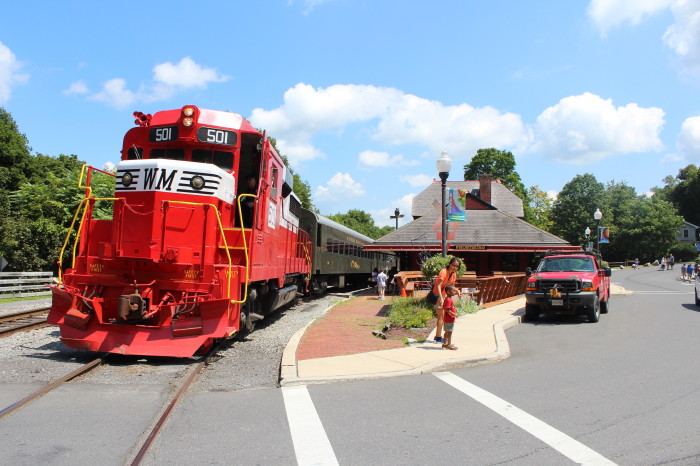
Frostburg (elev. 1920 ft.) at the Old C&P
Station that was designed by architect E. Francis Baldwin and
built in1891. The station has been newly refurbished with a
restaurant in the old freight depot, a gift shop and lounge. The
telegrapher occupied the bay window along track-side, and
preserved on his desk are the telegraph, telephone and ticket
stamper which he used. The modern electric, engine turntable is
located just 50 yards beyond the station; and just beyond the
turntable is the portal of the old, 537 foot tunnel (built in
1856) under the city of Frostburg which once led the railroad into
the Georges Creek Valley and to the coal mines there.
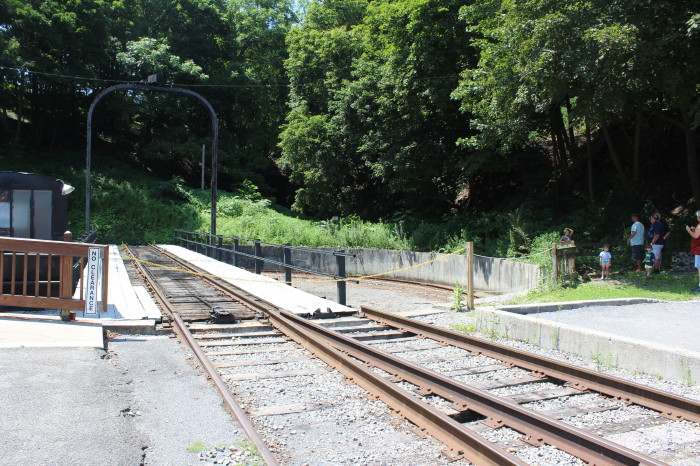
Tracks on the turntable for the locomotive.
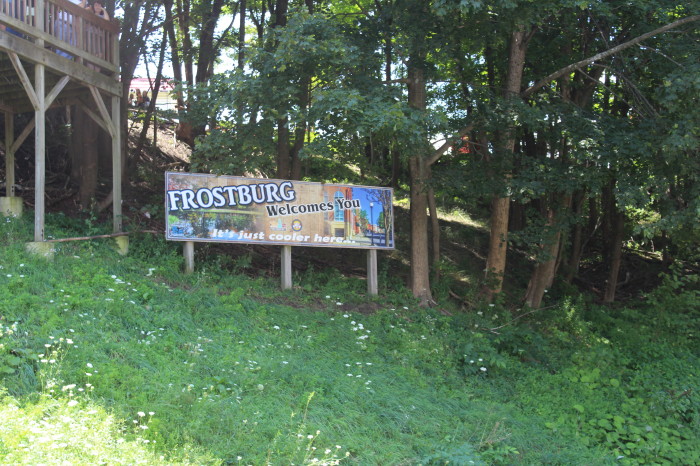
After leaving the train I walked to the turntable and then headed
to the stairs which go to the main drag of Frostburg. On my climb
up the stairs, I stopped to watch the engine moving on to the
turntable and then being rotated so as to now point in the reverse
direction.
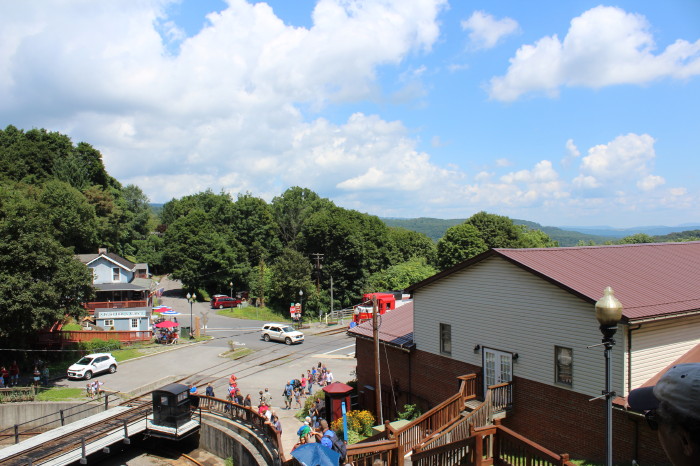
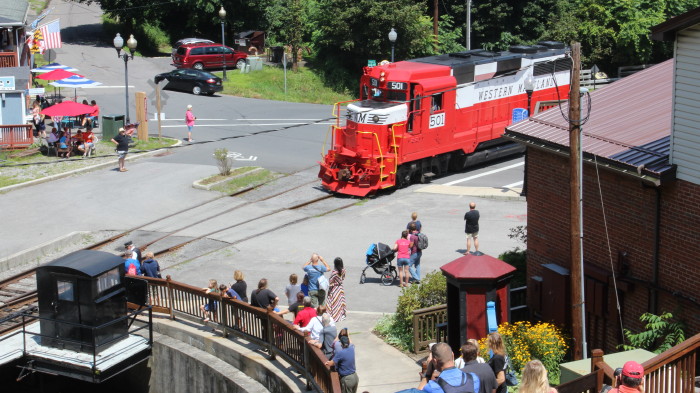
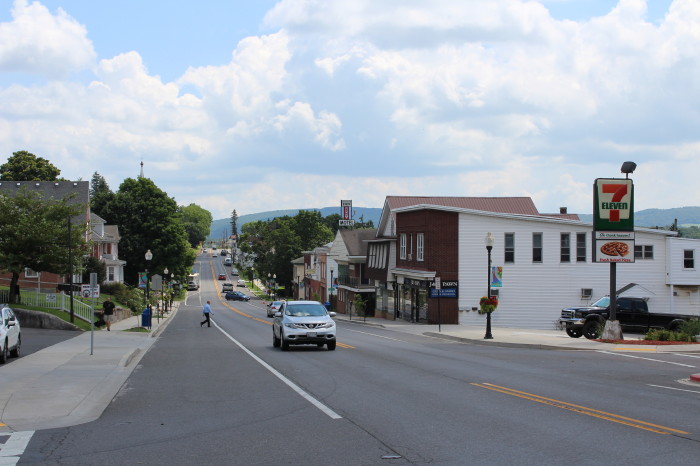
Main Street and Alt US Route 40.
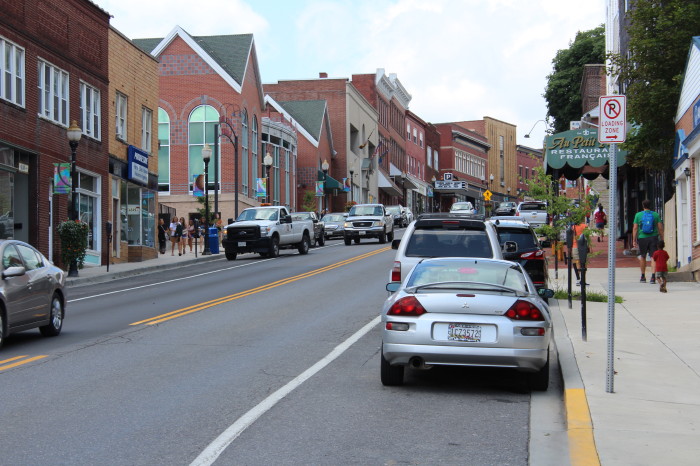
What began as a tiny mining
town and a stagecoach stop along the National Road, the nation's
oldest highway, Frostburg has grown to become a modern and
diverse community. Home to Frostburg State University and
nicknamed the "Mountain City," Frostburg boasts a busting Main
Street fittingly located up the hill from the Great Allegheny
Passage trail. Nestled in the Maryland Mountains, the area is
rich in Appalachian heritage and is known for its vivid autumn
foliage, snowy white winters, a vibrant spring and cool summers.
Coal was discovered near Frostburg as early
as 1782. The completion of the Baltimore & Ohio Railroad to
Cumberland in 1842 and the Cumberland & Pennsylvania
Railroad to Frostburg in 1852 made it possible to ship coal in
large quantities. Frostburg became a commercial center for
mining, both thriving and suffering with the fluctuation of coal
prices.
After climbing the hill, I felt like it was
the same as climbing a four or five story building so I didn't
stay up top for long. Going down is much easier and the view
from up here was great. I also noticed not many others made the
trip up the hill. Upon reaching lower altitude I then joined up
with Bob, Elizabeth and Chris in front of a hamburger stand near
the turntable. I had a hamburger and an ice cream sandwich. As
it neared the departure time, the vendor was selling her burgers
at half price so I bought one for the road. Then we walked over
to the station.
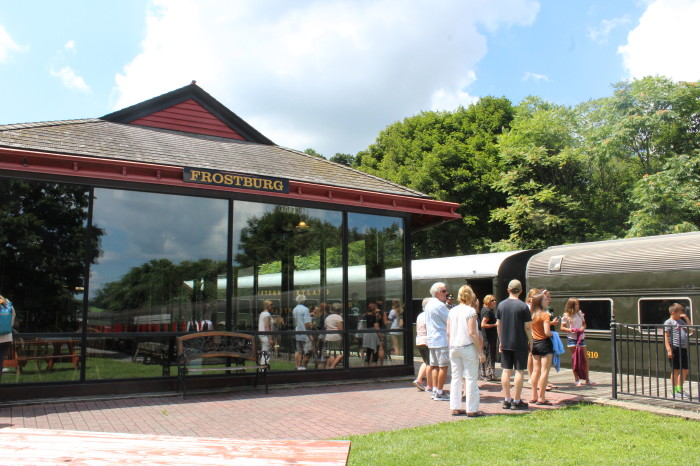
Waiting at the station.
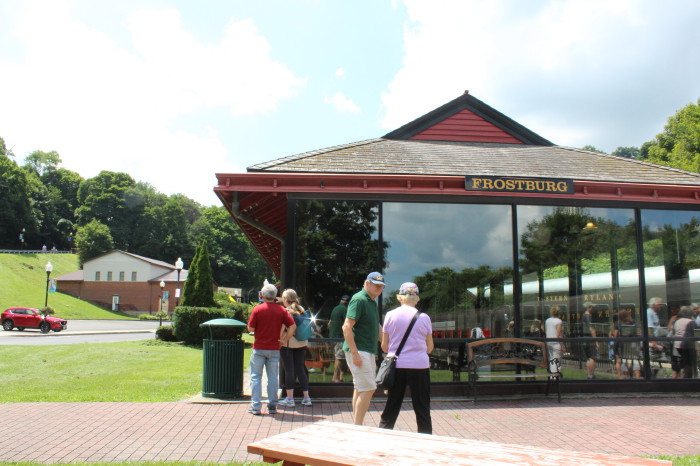
We then reboarded the train for a nice return trip.
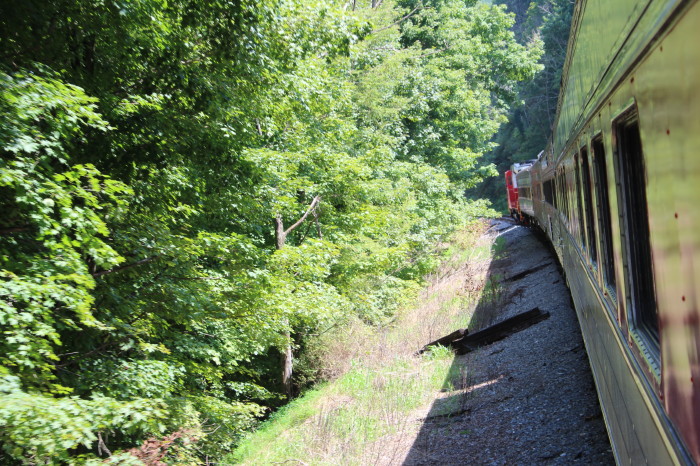
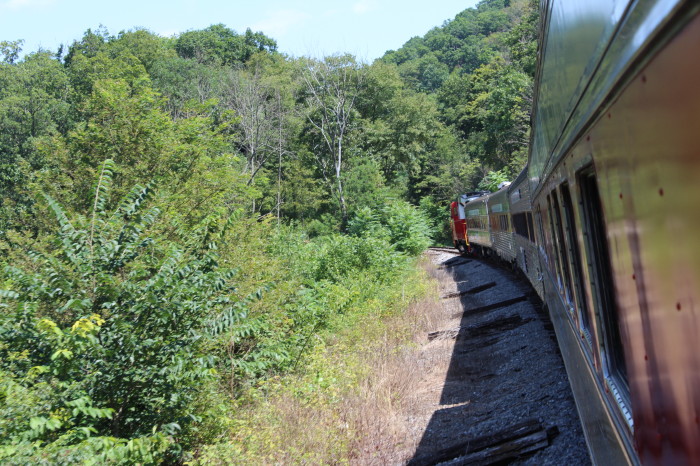
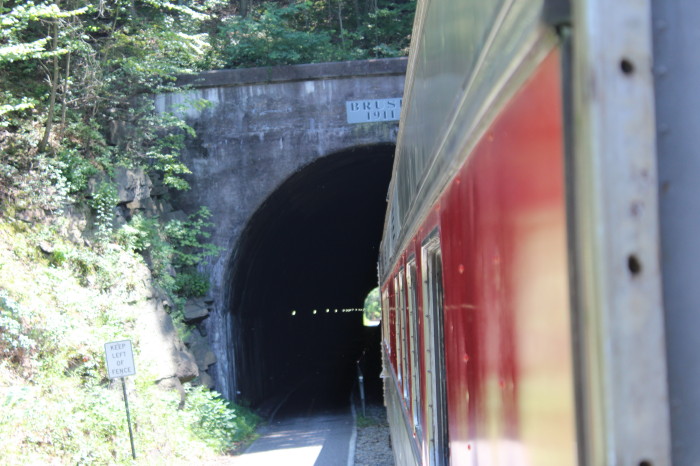
Entering Brush Tunnel.
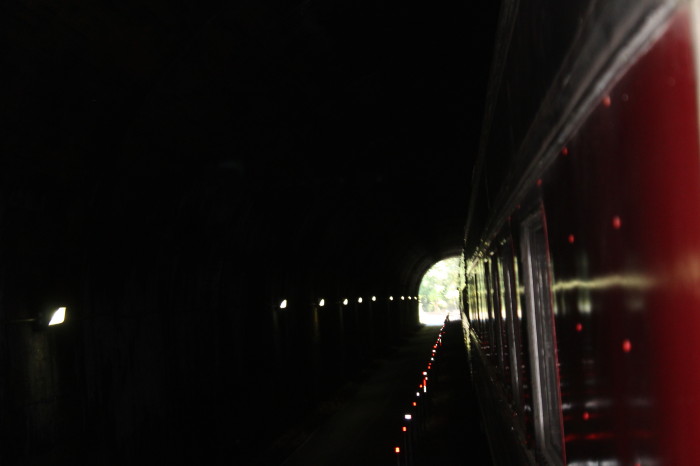
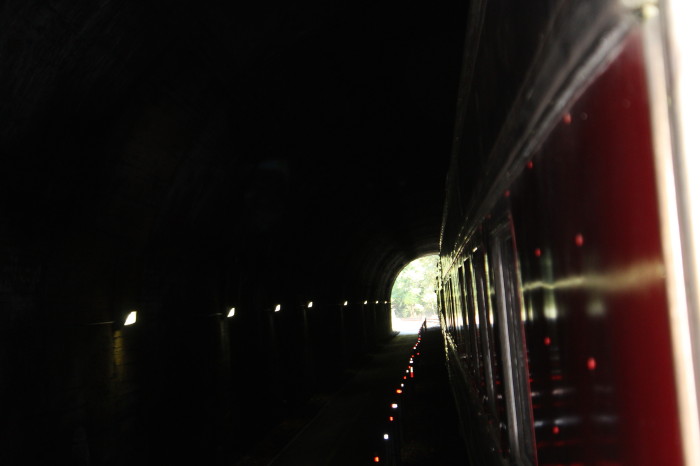
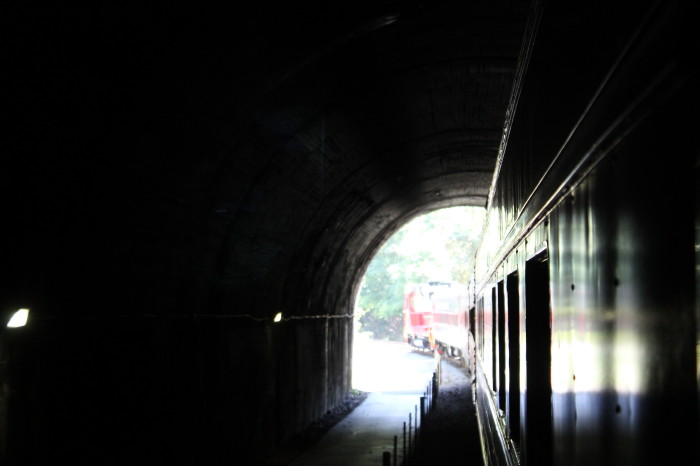
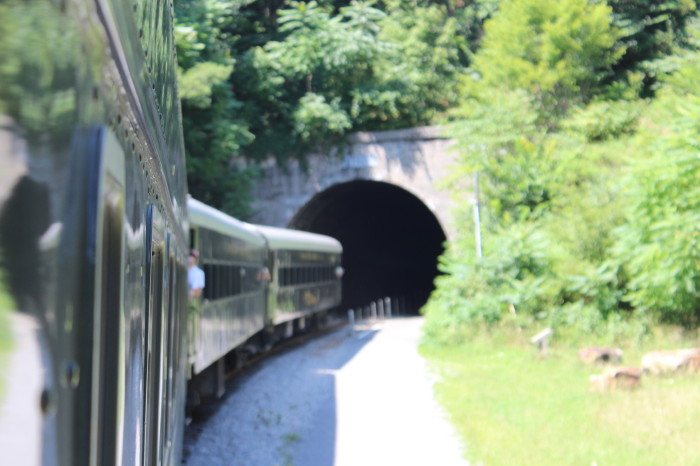
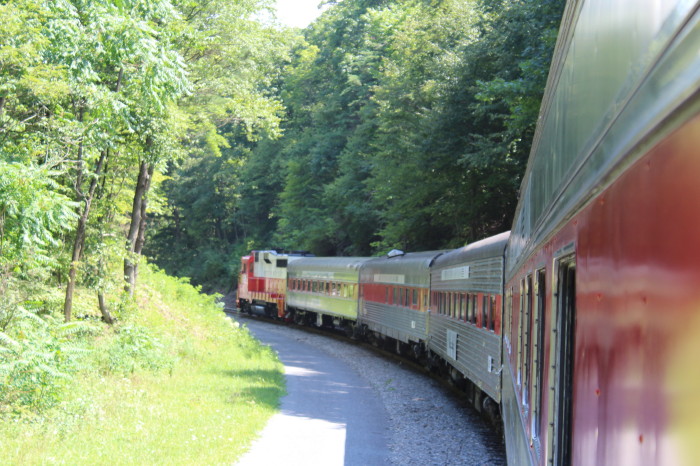
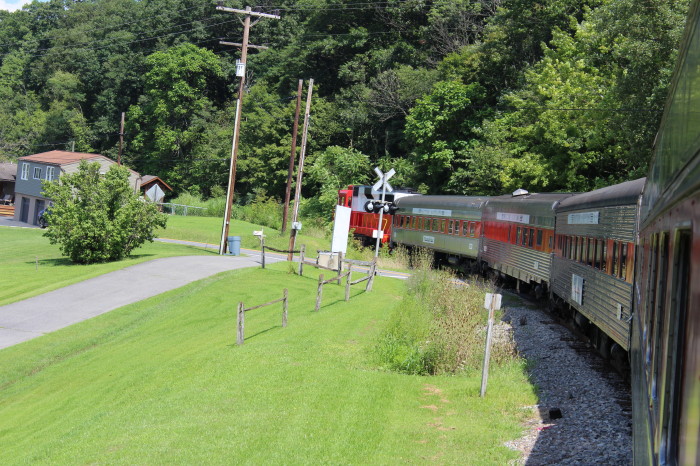
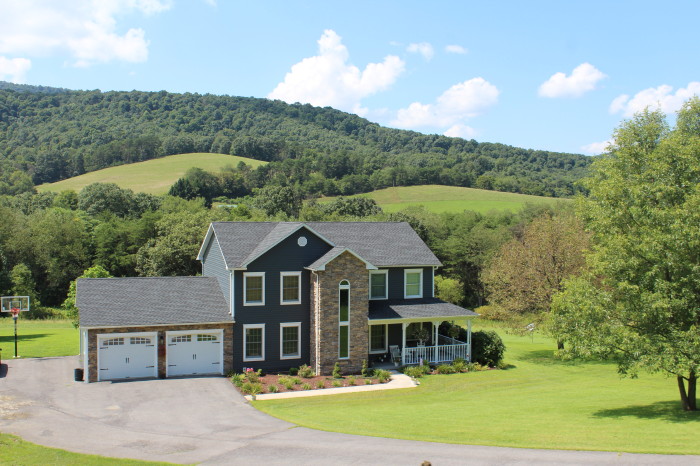
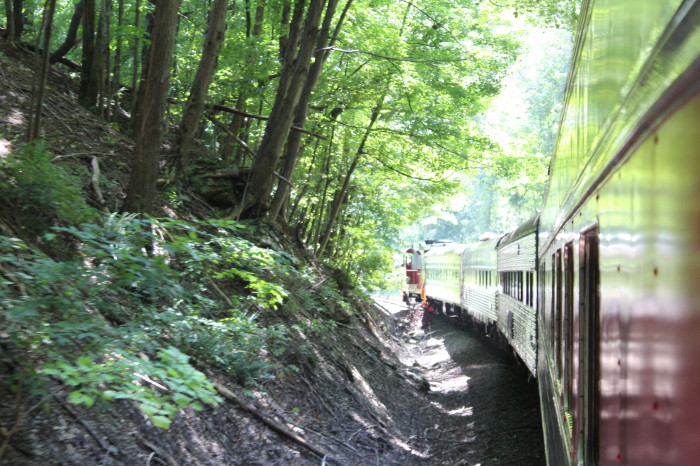
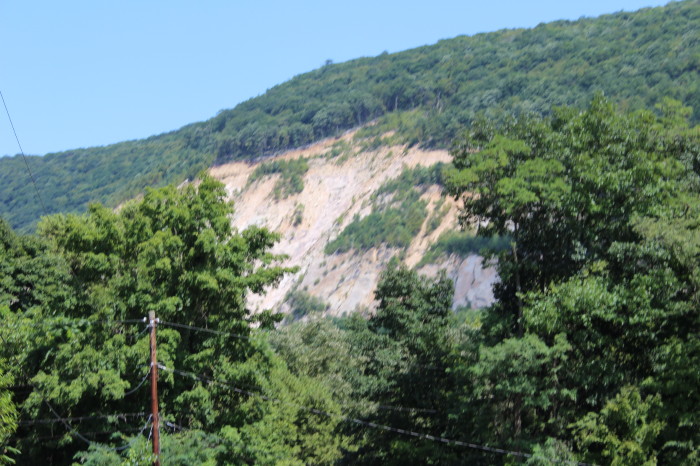
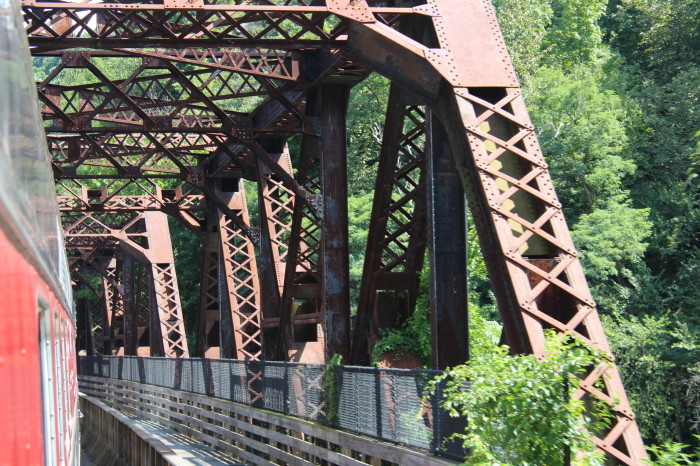
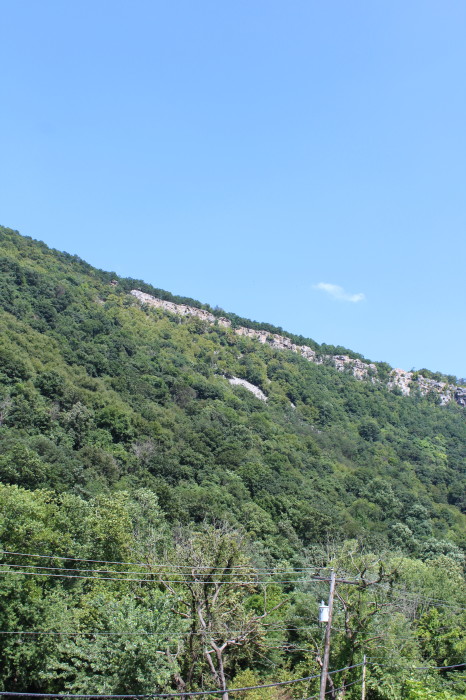
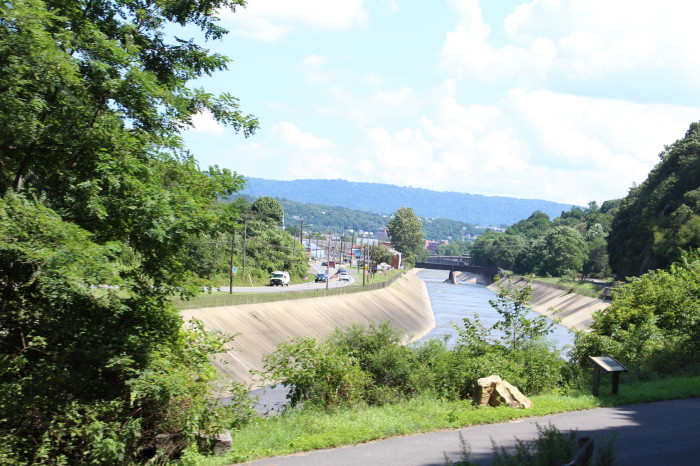
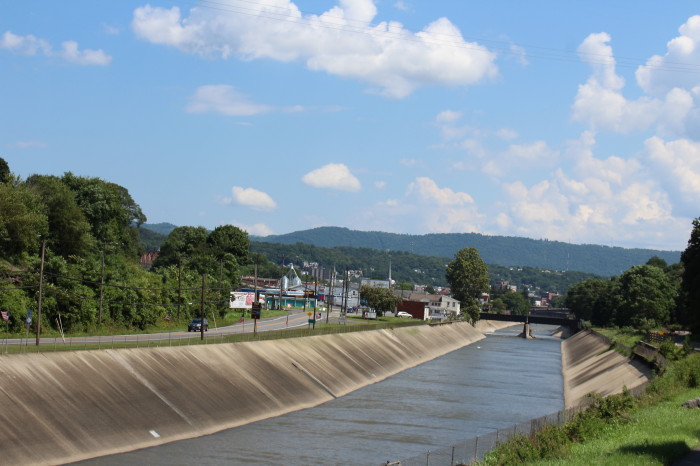
We arrived back at the station in Cumberland and I would like to
thank the Western Maryland Scenic Railroad for having us ride
their train today and also to the excellent train crew who took
such good care of us. From the station, we walked over to next
attraction in town.
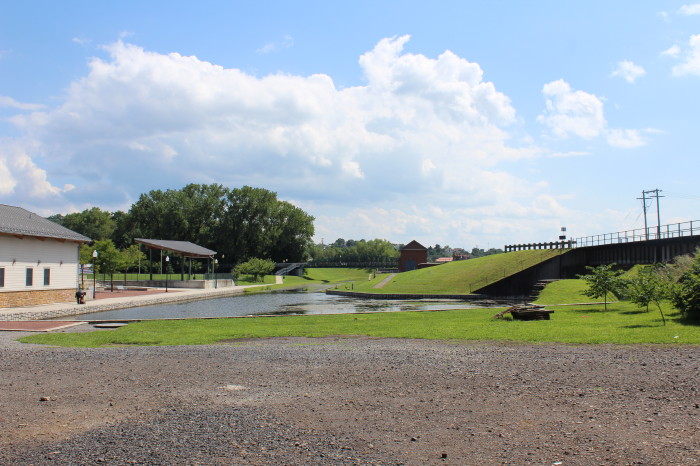
Start of C&O Canal Towpath.
From the Great Allegheny
Passage in Cumberland, venture onto the C&O Towpath for an
entirely different trail experience that follows the Chesapeake
& Ohio Canal and Potomac River for 184.5 miles to Washington
D.C. The C&O Canal was built between 1828 and 1850 allowing
lumber, grain and other agricultural products to float down the/
canal to market. It operated sporadically between floods until/
1924. In 1954, efforts were made to save it from being converted
to a parkway and in 1971 the Canal became a National Historic
Park. Today, much of the Canal has been drained of water and is
reclaimed by the forest but remains a favorite of hikers,
joggers and cyclists.
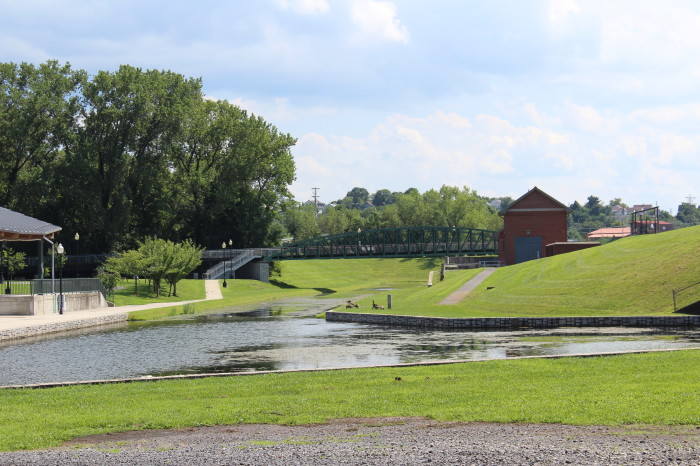
From the canal we walked
back to the hotel via Baltimore Street with myself stopping in
the main street like stores and shops to look and shop. In a
chain drug store I bought a memory card for my camera but wasn't
thrilled that the price was double from what I would pay back
home.
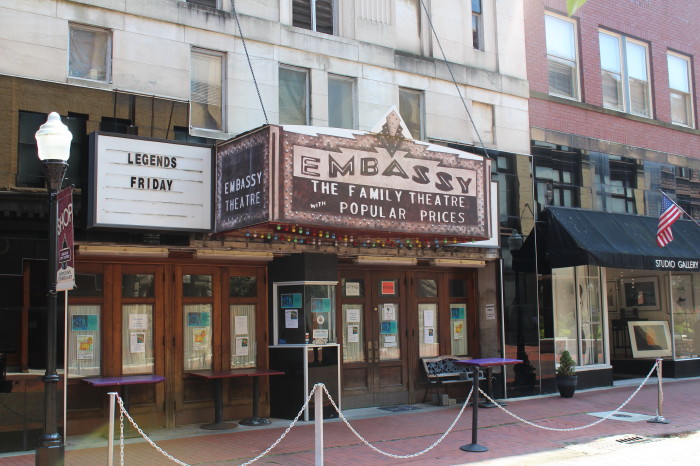
Small town movie theatre.
At dinner time, we all met up
to walk the couple of blocks to the Roy Rogers store where I had
the Berry Chicken Salad with a drink. We ate in but didn't stay
long and then walked back to the hotel. Later I went for a
stroll around the block for a breath of fresh evening air and
then it was time to dive between the sheets.
Thanks for reading.
Text and Photos by Author
The
author retains all rights. No reproductions are
allowed without the author's consent.